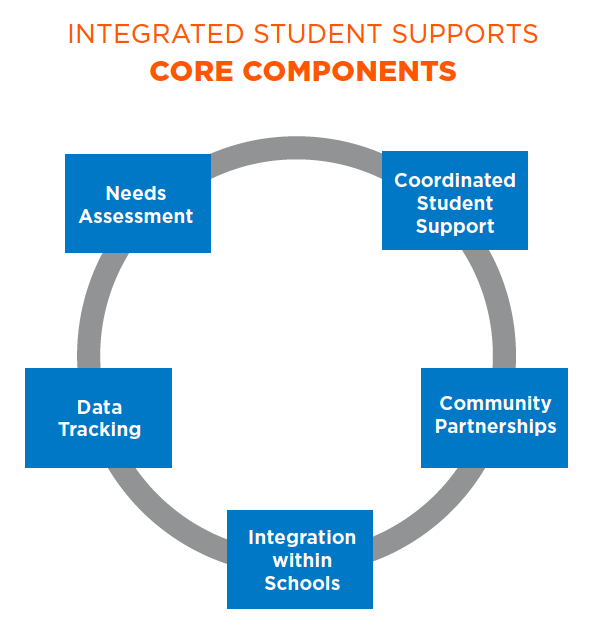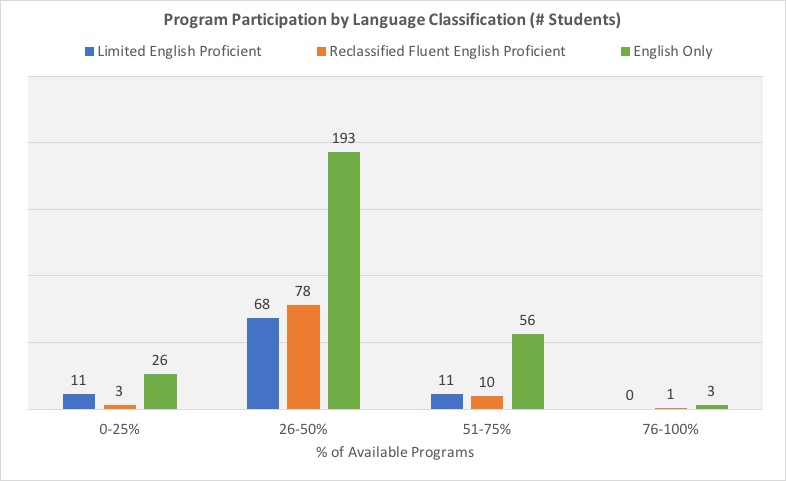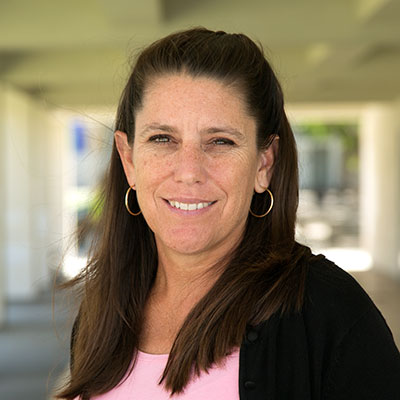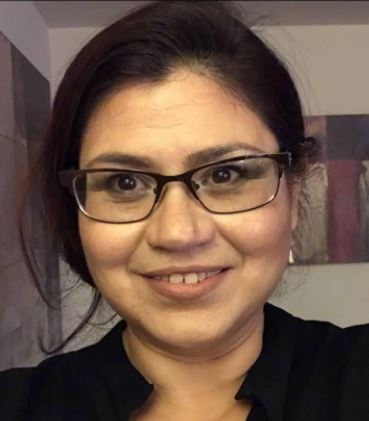UCLA Center for Community Schooling Research Practice Partnership Brief 3-RPP-20
Integrated Data Systems
Informing Student Supports in Community Schools
October 1, 2020

Summary
Equitably supporting student and family needs at the school level requires intentional delivery of services and careful monitoring of associated student outcomes. This brief documents the efforts of two university-assisted community schools—UCLA Community School and Mann UCLA Community School—to systematize the delivery and efficacy of a range of student supports, services and learning opportunities through locally designed integrated data systems (IDS). Both schools strive to care for their students’ complex needs by addressing barriers to family well-being such as food and housing insecurities, and inadequate access to health and mental health services. Like many community schools, they also address learning time gaps by providing students with access to enriched learning opportunities like art and music, summer camp and tutoring—opportunities often afforded to their middle- and high-income peers.
This brief documents findings from a research-practice partnership (RPP) at both UCLA Community Schools to develop and study local data systems and how they can be used in conjunction with district systems to achieve the following four goals: 1) track the implementation of academic and nonacademic student supports; 2) monitor the equitable distribution of services and programs; 3) measure the impact of supports and services on student outcomes; and 4) support community school staff to make data-informed decisions regarding the provision of student supports and services. These goals served as research questions that guided the RPP.
Based on a case study of each community school’s evolving IDS framework, our findings highlight how the framework brought the need for supports and services to the forefront for each school site. The brief also highlights how locally designed IDS can be tailored to meet the distinct needs of each site and the students and families they serve. In particular, we found that:
- Locally-designed integrated data systems provide much needed flexibility and nimbleness to adapt to the changing needs of schools, critical during the Covid-19 era.
- Locally-designed systems must integrate and communicate across multiple data platforms, including district level platforms, to provide a better understanding of students’ holistic growth and well-being and to create coherency across data systems.
- Designating a full-time coordinator who can bring together administrators, teachers, support staff, community and university partners, and researchers to support the equitable and efficacious delivery of programs and services and the overarching IDS work is paramount to ensure the work continues to evolve.
- The district’s Whole Child Integrated Platform, still in a pilot phase, signals the need of IDS across schools and systems, and provides an opportunity to refine and align school-level IDS initiatives with district-level policies and data systems.
As these findings illuminate, implementing a high-quality ISS system is, by design, a never-ending task that requires continuous refinement and responsiveness to a school’s changing needs and circumstances.
Introduction
Community schools are designed to serve as the neighborhood hub for students and their families. They are meant to be a conduit of engagement for all relevant members of the community to join together to promote student success. The community school model is built on the four pillars of expanded learning time and opportunities, collaborative leadership and practice, active family and community engagement, and integrated student supports (ISS). While all four pillars are mutually reinforcing, ISS serves as a particularly crucial tool of connection in reducing out-of-school learning barriers for students and families (Oakes, Maier, & Daniel, 2017). ISS is designed to provide wraparound services that target various barriers to student achievement and meet students’ needs inside and outside of school (Oakes et al., 2017). ISS include academic services, housing and food assistance, medical care, mental and behavioral health services, and other critical services for families (Moore, Lantos, Harper, & Jones, 2017).
Under the Every Student Succeeds Act (ESSA), states have been encouraged to implement ISS initiatives as an intervention for improving student outcomes and addressing inequities in school resources (Moore et al., 2017). In particular, ESSA permits schools and districts to incorporate ISS into federally funded programs that promote students’ academic achievement (Title I) and health and safety (Title VI) (Moore et al., 2017). These ISS policies provide schools with the opportunity to systematically address a wide range of barriers to student learning and improve students’ academic and nonacademic outcomes. In times of crisis, such as the Covid-19 pandemic, ISS initiatives become increasingly important in supporting our most vulnerable students and families.
Data Tracking as a Key Component of Integrated Student Supports
In order to equitably address student and family needs both during and beyond a context of crisis, it is imperative to develop a system to track provision of integrated student supports. Within the ISS theory of change, this core component is referred to as data tracking. While this brief will focus primarily on the data tracking component, the other four core components of ISS—needs assessment, coordinated student supports, community partnerships, and integration within schools—are closely intertwined with developing and maintaining an effective data tracking system (see Figure 1). Examining each component as part of the ISS process enables teachers, support staff, and school-based service providers to be strategic in assessing student needs, collaborating with school and community stakeholders to coordinate supports, streamlining supports within the school, and tracking the efficacy of services on holistic student outcomes. Such a process is ongoing and can enable a longitudinal view of how a student and their family has been supported throughout their time at the community school.

The establishment and implementation of a data tracking component can also facilitate the equitable and efficacious distribution of expanded learning time and opportunities (ELT/O)—a core pillar of the community schools model (Oakes et al., 2017). ELT/O that take place before and after the school day, during weekends, or the summer to augment traditional learning are critical in addressing social and economic inequalities (Saunders, Ruiz, & Oakes, 2017). These opportunities, like academic tutoring, art and music classes and internships, enable students to study, explore and pursue their passions under the supervision of caring adults, and can address the widening learning time gap between students from low-income families and their peers from middle- and high-income families (Saunders et al., 2017). Like ISS, it is imperative to develop a system to track the provision of ELT/O to ensure all students have equitable access to enriched and engaging learning experiences. By tracking these opportunities, school-based coordinators, teams and other school staff can be strategic in terms of matching programs to students’ interests and needs, collaborating with school and community stakeholders to coordinate programs, and tracking the efficacy of program participation via holistic student outcomes. Tracking these services may become more critical as school sites begin to see the effect of “Covid slide” due to students’ limited access to the internet, low levels of engagement due to school closures, and the disruption of programs and services. Students may require increased access to expanded learning time and opportunities to “catch up.”
School sites often utilize multiple data-tracking systems to organize such information as attendance, grades, test scores, and enrollment history. Teachers and school staff are required to navigate these multiple systems in order to gain and contribute to a more accurate snapshot of a student’s academic and non-academic profile. A more comprehensive approach to data-tracking streamlines information from multiple systems into one integrated data system (IDS). While there is some research on the role of an IDS to streamline government services for children, there is sparse if any literature that outlines the development of an IDS that seeks to organize school and community-based resources for students and families at the community school level.
Establishing the Integrated Data Systems Work Group
Over the course of the 2019-2020 school year, a team of UCLA researchers and community school staff from both UCLA Community Schools met on a monthly basis to develop a better understanding of data systems already in existence at each school and the future of what a comprehensive IDS could look like. This IDS initiative has been guided by a staff-led, bottom-up approach and is framed as a research-practice partnership (RPP)—a long-term collaboration between practitioners and researchers that investigates problems of practice and generates school improvement strategies (Coburn, Penuel, & Geil, 2013).
As the Integrated Data Systems Work Group, the team examines the provision of ISS and ELT/O through the lens of data-tracking and is focused on four key goals: (1) to track the implementation of academic and nonacademic student supports, (2) to monitor the equitable distribution of services and programs, (3) to measure the impact of supports and services on student outcomes, and (4) to support community school staff to make data-informed decisions around provision of student supports and services. These goals also serve as research questions that guide the larger RPP. Such a focus has grown organically out of a need to capture the creativity of the teachers and service providers at both schools in developing their own systems and to conduct a needs assessment of how such systems do or do not meet the demands of equitably providing needed supports, services and opportunities for all students.
Motivated by the same overarching research and programming goals, each community school has taken a slightly different route in developing and implementing a comprehensive IDS to effectively support its practices regarding ISS and expanded learning time and opportunities. Despite these differences, the following case studies highlight the range of services and supports provided by community schools and the critical role of coordination in ensuring equitable and efficacious delivery. The case studies also demonstrate the ongoing efforts of each community school to connect locally designed comprehensive IDS with existing data systems, including the Los Angeles Unified School District’s (LAUSD’s) new Whole Child Integrated Data platform, to help develop a holistic understanding of students’ needs and the influence of supports and services on students’ development and growth.
Case Studies of Integrated Data Systems at UCLA Community Schools
In the following case studies, we describe the broader ISS and ELT/O work at each community school and foreground a specific IDS initiative that exemplifies the core components of the community school pillar. Both community schools were guided by the same overarching research questions:
- How can a data system improve efficiency and effectiveness in the implementation of student supports and services?
- What role do data systems play in equitably and strategically delivering student supports and services?
- How do ISS and ELT/O impact students’ academic and nonacademic outcomes?
We also depict the nimbleness of each locally designed data system and demonstrate how it adapts to the changing needs of each school. While the IDS work draws significance from its foundational role in the design of community schools, it has been imbued with particular urgency during the Covid-19 era.
The case study of ISS and ELT/O at Mann UCLA Community School illustrates the process of developing an IDS to support long-term community partnerships and programming. The case study of ISS at UCLA Community School illustrates the process of streamlining disparate tracking mechanisms that existed across grade levels to develop a school-wide IDS—a process made more critical by Covid-19.
Mann UCLA Community School Case Study

In serving a low-income student population with a disproportionately high number of foster youth, homeless youth, and students with special needs, Mann UCLA Community School has continuously endeavored to improve student outcomes by providing academic, behavioral, social-emotional, and health supports. By capitalizing on the expertise of school staff and leveraging university and community partnerships, the school has been able to bring a wide range of internal and external supports to its students and families through the provision of ISS and ELO/T (see Figure 2). Supports and services include health and mental health services, extracurricular clubs, tutoring, summer programming, and college readiness programs. Tracking and evaluating these supports, however, has been trickier to execute. Largely managed by the Student Support and Progress Team (SSPT), College Center staff, and support staff at large, services and programs are documented across multiple data platforms (e.g., LAUSD’s MiSiS and Welligent) as well as staff’s personal records. In an internal review of the ISS and ELT/O systems, a major challenge identified by SSPT members was the lack of a central, accessible database for identification and tracking of student needs and services.

Given the clear need for an integrated data system and additional oversight of ISS and ELT/O efforts, the Integrated Student Supports Subcommittee was formally established in 2018 by the school’s Governance Council. The Subcommittee consists of school administrators, teachers, support staff, and researchers. In 2019, the Integrated Data Systems Work Group was formed by staff and researchers from both UCLA Community Schools to focus on the data component of their ISS and ELO/T efforts. These ongoing partnerships between practitioners and researchers have led to significant progress in establishing an ISS system and developing an effective integrated data system at Mann UCLA Community School to monitor efforts.
Developing an Integrated Data System to Support ISS and ELT/O Programs
In particular, the RPP between Mann UCLA’s College Center staff and UCLA researchers has exemplified how data tracking can inform and strengthen other critical ISS components such as needs assessment, coordinated student supports, community partnerships, and integration. For example, alongside UCLA Community Programs staff, College Center staff coordinate and facilitate many of the school’s ELT/O offerings such as academic and college readiness supports through after-school tutoring, work study placements, and college campus visits; they also collaborate with university and community partners to provide extracurricular supports such as youth leadership programs, creative arts workshops, and UCLA’s UniCamp. Initial discussions between RPP members identified an urgent need to systematically collect student engagement data (e.g., participation in programs, access to services) and program data (e.g., duration, frequency, number of facilitators). While tracking student engagement and program data across this complex network of supports would be an achievement in itself, RPP members also recognized that these data could be used to improve student needs assessments, coordination of supports, integration of supports within schools, and community partnerships.
Designing IDS Instruments and Protocols for Data-Informed Decision-Making
Through an ongoing and iterative process of collaborative inquiry, RPP members have worked together to (1) design data tracking instruments and protocols and (2) review data and make data-informed decisions about student engagement and programming practices.
RPP members have developed several data tracking instruments, including:
- Comprehensive data sheet (Excel) with student engagement data (student participation data, attendance and GPA data, and demographic data) and program overview data (program details, implementation requirements, enrollment criteria, and process data)
- Partnership overview checklist (Word) to collect program overview data
- Mann UCLA engagement tracker (Google Form) to collect student engagement data
RPP members are also developing a standardized protocol for tracking and reporting student- and program-level data on a quarterly and annual basis:
By conducting iterative data analyses and regular review of findings, RPP members have been able to make data-informed decisions about student engagement and programming practices. Program participation is tracked by individual students, grade/cohort, and school-wide, allowing for individual and aggregate levels of analyses. Program participation is currently calculated as the percentage of total available programs—i.e., programs offered and open to each grade level—that students participated in; participation rates are further categorized into 4 levels (0-25%, 26-50%, 51-75%, 76-100%). For example, an 11th grade student who participated in 14 of the 17 available programs for 11th graders would have a participation rate of 82% and be included in the 76-100% participation level. To improve future analyses of students’ program participation and engagement, RPP members will continue to refine the definition of a “program” in order to account for variation in levels of intensity (e.g., one-hour tutoring session vs. one-week summer camp) and enrollment criteria (e.g., open to all students vs. limited to 9th and 10th grade students).
Based on longitudinal data for the last five years (2016-2020), RPP members produced a preliminary data report to provide insights about program coordination and implementation, equitable distribution of programs among all students, and student outcomes associated with program participation. For example, Figure 3 shows the variation in program participation rates for students in different language classification groups; the number of students identified as English Only with high program participation rates is significantly greater than the number of students identified as English learners (ELs; i.e., Limited English Proficient and Reclassified Fluent English Proficient) with high program participation rates. These data identified a discrepancy in supports provided for and accessed by students identified as ELs and confirmed other data sources that indicated the need for increased EL supports at Mann UCLA. After reviewing these findings, RPP members and partners collaborated to provide additional partnership supports for students who are ELs, including a bilingual summer art program, Dual Enrollment for Spanish 1 students through a local community college, and new BCLAD bilingual teachers. This example illustrates how data was used to assess whether supports are equitably distributed across all Mann UCLA students and, upon identifying a discrepancy, make data-informed programming decisions for additional EL supports. Future data use will include assessing the impact of these supports for students who are English learners.

The data report also summarized the process of developing IDS instruments and procedures, key findings from student engagement and program data, ongoing challenges and limitations, and recommendations for improving ISS and ELT/O at Mann UCLA. In particular, RPP members have identified the following action items for the 2020-2021 school year:
- Identify additional student engagement and program data that should be collected to better address student needs and programming inquiries.
- Expand the IDS to incorporate data from all ISS and ELT/O programs, services, and supports provided by Mann UCLA teachers, support staff, and community partners (e.g., teacher-led needs assessment and coordination of Covid-19 resources for students, collaboration between school staff and UCLA researchers to improve social-emotional supports for students in Special Education).
- Increase involvement and accountability from ISS and ELT/O stakeholders and community partners.
- Improve outreach strategies and increase supports for middle school students.
- Develop and implement a standardized program evaluation protocol.
The nascent efforts at Mann UCLA Community School to develop an IDS shines a light on the distribution of current programs, supports and services. In doing so, it has also elevated the unmet needs of students and families within the community, and can assist in directing additional and future resources to those areas, students and families. These efforts also identify the need for further integration and communication across multiple data platforms (e.g., LAUSD’s MiSiS, Welligent, and Whole Child Integrated Data systems) that can enable staff to gain a better understanding of students’ holistic growth and well-being.
Spotlight: Blanca Campos Montoya, Community School Counselor
As a Community School Counselor and College Center staff member, Blanca Campos Montoya has had an integral role in tracking and managing student engagement and program data. Ms. Campos reflected on her experiences with developing an integrated data system and discussed how it can be used to support services at the school:
Collecting information about programs and student participation is always a challenging task. Fortunately, we began consistently documenting all the activities at Mann UCLA Community School and funded programs gathered by the UCLA partnership that have been provided to our students during the past years. Based on the first data collection and documentation we started last year, I decided to continue using those methods of documenting students’ participation throughout the different programs provided at the school. With the help of other Community School staff, I have been able to track students’ participation and visualize the needs and challenges students are facing not only academically but socially and emotionally, too. Furthermore, I see the benefits of having an integrated data system that is shared between all school departments. Having a centralized place to refer to specific information about a student or program will give us a visual about which students are taking advantage of the offered programs and which ones need to engage with said programs to expand and enrich their high school experience and academic performance.
Additionally, Ms. Campos elaborated on why integrated student supports matter in the first place, underscoring the need for evaluation protocols that will capture the impact of ISS and ELT/O on student outcomes:
We are seeing the benefits with students when they participate and feel included in our school activities. For example, after students participated in the UCLA TFT [Theatre, Film and Television] Summer Writing Program, they had the opportunity to experience and engage in college life and have a clearer vision of who they want to be and where they want to go after graduating from high school. For some, after coming back from the HBCU [Historically Black Colleges and Universities] and the Bay Area tours, their vision expanded to consider other colleges they could attend after graduating. Finally, the experiences from the different programs help our students to identify their strengths and weaknesses, and to understand they are sharing a collective experience among themselves that they couldn’t imagine before, ultimately creating bonds between them and school staff.
UCLA Community School Case Study

Similar to Mann UCLA Community School, UCLA Community School serves a student population that is 92% socioeconomically disadvantaged and diverse in both academic and socioemotional need. UCLA Community School serves grades TK-12 and approaches education through a holistic lens. Components of the community school approach are woven through the supports and services offered to students and families in need, expanded learning time and opportunities, and collaborative school structures. For example, the school houses an Immigrant Family Legal Clinic and parent center, both of which demonstrate a commitment to the community school pillar of family engagement. Seminar classes and senior internships connect students to learning opportunities that enable them to discover and deepen their interests. A robust student support team—composed of the Psychiatric Social Worker, the School Psychologist, and multiple counselors and coordinators—regularly collaborates to ensure that students with complex needs do not slip through the cracks. Such a layered approach to supporting students requires effective monitoring of individual services provided to students and routine collaboration around provision of such services.
Through an iterative process of interviews with key school staff and team meetings, RPP members developed a series of inquiries focused on how wraparound student services are tracked, systematized, and evaluated for impact at UCLA Community School. Similar to the Mann case study, this study focuses primarily on the systems of tracking ISS and the bottom-up approaches designed and utilized by school service-providers.
Ongoing conversations highlighted the vast landscape of data and data systems used to provide and monitor student service provision, but it also became clear that there was no single IDS that worked for all school stakeholders. Prior to the onset of the Covid-19 pandemic, UCLA Community School faculty and staff utilized several data systems to track student supports and relevant student data. Some of these systems, like MiSiS and Welligent, were provided by the district, while others were designed by school-based staff to meet their specific programming needs. Through a series of seven interviews with school counselors, we outlined the existing data systems in frequent use and the challenges in developing a more streamlined integrated data system.
Our research revealed the frequent use of four main district-provided data systems and five school-created data systems. The district-provided data systems (Naviance, Welligent, MiSiS, and Schoology) intersected with school-created data systems inconsistently. LAUSD’s Whole Child Integrated Data system, introduced in winter 2020, has yet to be fully implemented and early use suggests that it will be challenging to fully integrate the new system with the locally designed systems.
Designing Adaptive IDS in Response to Covid-19
While the interviews exposed interest in creating coherence across data systems to improve the use of data-tracking mechanisms to make decisions around student supports, the Covid-19 pandemic and school closure ignited an urgent need for data integration. As the spring progressed and the pandemic became a more formidable opponent, a new IDS was created by teachers, support staff, and UCLA partners to integrate information from existing systems (e.g., MiSiS, Schoology) as well as several new data collecting mechanisms.
The heart of this new integrated data system was a set of grade-level spreadsheets that tracked the school’s connections with students and families during the closure to identify needs and provide supports. Prior to the closure, middle school teachers had been using a similar system as the backbone of their advisory program—to collect data on students strengths, interests and needs, and to track their progress across classes. As the school transitioned to distance-learning, this system expanded school wide to track specific student and family needs such as technological device access, internet access, and ongoing communication with the school. This information was sourced from one-on-one phone calls and texts with families as well as a series of three student surveys administered throughout the spring. The surveys were based on a model developed by a high school teacher to connect with her advisees the week after school closed and were instrumental in gathering a more comprehensive view of the rapidly shifting student experience. Survey data provided insight into who was home with students during the day, what kind of home environment students were learning in, and how students were engaging with virtual learning—information that helped teachers connect with their students. Data from the surveys, Schoology use, and one-on-one follow ups were entered into the grade-level spreadsheets to track the number of students and families who were connected in some way to the school during the Spring 2020 closure. These data were also used to create a Covid-19 Student Engagement Dashboard to monitor student well-being, learning, and access to technology. As Figure 4 describes, this intentional and persistent outreach resulted in the school connecting with 98% of students and families. Of particular note, the rates of engagement in the middle school were high throughout the closure due to their existing system of tracking and supporting students. Based on Schoology use data alone, the middle school students also engaged at higher rates than middle school students districtwide (Quartz, 2020).

The grade-level spreadsheets were maintained by a Covid-19 Case Management Team, a subset of the Student Support Team. This team included a lead administrator, the Psychiatric Social Worker, two counselors, a coordinator, and the English Learner (EL) lead. The Special Education (SPED) team and school psychologist also assisted with tracking and following up on specific SPED-related cases.
To tailor supports, the spreadsheets included tabs for specific sub-populations: students identified with special needs, ELs, and individuals with Covid-19 related needs. This ensured that staff maintained constant communication with students most in need. Students and families with Covid-19 related needs were identified by parent, teacher, and support staff referrals. This monitoring serves as the core ISS component of needs assessment and has been ongoing throughout the pandemic. Case managers utilize both simple Yes/No checkboxes to mark if families have been contacted and if services have been rendered. There is also space for staff to enter qualitative notes or specify follow-up on individual student cases.
The UCLA Community School Psychiatric Social Worker organized the maintenance of the Covid Case Management tab. She explained the support and service provision in terms of a Multi-Tiered System of Support (MTSS). Students were organized according to the tier of services that matched their level of need. Categorizations were based on criteria such as percentage of work completion and contact with the school community. All students and families received Tier 1 supports, which included communication via a Schoology group called “Together/Juntos.” Disseminated information included details about signing up for CalFresh, using the Pandemic EBT card, utilizing DRAI (Disaster Relief Assistance for Immigrants), accessing grants from community partners, and other relevant pandemic-related non-academic supports. Students requiring Tier 2 and 3 supports were split up so that each member of the Covid Case Management Team was assigned a specific caseload that they were tracking, supporting, and following up with. Roughly 71 families required Tier 2 supports. These families were referred to the Psychiatric Social Worker directly by teachers or through conversations with other students and families. Such referrals came from families having more specific needs around unemployment, food security, legal rights, and medical concerns. The same information that was sent out to all families via Schoology as a Tier 1 support was sent to this group of families via direct call or text as a Tier 2 support to ensure they received the details. Moreover, the Psychiatric Social Worker compiled lists of local food banks and other specific resources to address individual student and family needs. Tier 3 supports were provided to a group of families that the Psychiatric Social Worker was communicating with weekly, if not multiple times a week. She noted that some of these families needed resources beyond what the school could provide, but she did her best to support cases of homelessness, cases involved with the Department of Child and Family Services (DCFS), and other more complex needs. Most of the cases that required Tier 3 supports were characterized by either direct impact of Covid-19 whereby the entire family had caught the virus and was unable to procure food or by dysfunctional and unhealthy housing situations. In the case of quarantine needs, a mutual aid fund was created to send groceries directly to impacted families. For unhealthy housing situations, each case was handled on an individual basis.
Refining IDS in Response to Continued School Closures
The Covid Case Management team continued to work with some families to support their well-being beyond the school year, noting 14 specific cases that required support through the summer. The team also used the summer months to refine the grade-level spreadsheets and to develop a more comprehensive routine around data use for supporting all students and families through the fall term and beyond. The most recent iteration of the IDS utilizes information from one-to-one student and family check-ins conducted through advisories and dens each Friday. The Covid Case Management Team meets to review data on Mondays and both the Support Staff and school-wide teams meet on Wednesdays to strategize around specific cases. On Wednesday afternoon, advisory teams meet to review the data and the process begins anew by the end of the week. Such a regular data analysis routine allows for all students to be supported and ensures that no child or family slips through the cracks.
This system built to respond to the student needs of virtual learning within a pandemic context exemplifies local efforts to build an IDS from the ground-up. The system was built from a foundation of genuine motivation, collaboration, and urgency. It enables tracking of specific and relevant student needs. It enables support staff to populate the document with data from existing data systems and to formulate the data to work for the specific context. And, it enables support staff to tailor the document to be user-friendly and functional. The dynamic nature of the IDS and its capacity to empower school staff to better support students and families in this unique context highlights the strength of a locally designed system.
While Covid-19 has moved the provision of all services and supports online, they are provided through the school. As UCLA Community School and other community schools across the country continue to assess and provide needed supports to students and families during Covid-19 school closures, it has become more critical than ever to understand the influence of services and supports, especially for those students with complex needs. Providing avenues for the school to understand and monitor effectiveness is paramount. This requires the IDS to connect to other data tracking systems. This last element touches on the core ISS component of integration with schools and highlights the role of community schools in holistically supporting students and their families.
Spotlight: Deborah Bailey, Psychiatric Social Worker
As the Psychiatric Social Worker and member of the Student Support and Progress Team (SSPT), Deborah Bailey has been instrumental in both supporting ongoing ISS work at UCLA Community School and working towards the vision of developing a more streamlined approach to data system use during the era of Covid-19. Ms. Bailey reflected on the strength of data system collaboration during this period:
I really like what it represents and the communication that has come as a result of it. I envision…keeping this going. We already have a unit like this—SSPT—it is more focused on behavioral or special education students, which is neat. But, this is so much different. Because it is a community approach, and [it is] not just me looking at everything, [it is] other people looking at other things. We want to keep this going. I really like that this system came [from] a bunch of people because it pulled upon a lot of people’s strengths.
Ms. Bailey also reflected on the role of integrated data systems beyond the pandemic context. She noted both the power of being able to support students throughout their educational journey by longitudinally monitoring the impact of services and the possibility of leveraging the integrated data system to expand existing practices:
It is my hope that I will be at UCLA for the rest of my career, to really be a part of that community structure, and to see what community can be if you keep that longevity. Those kinds of systems—where kids move along, where we can look at the opportunities they’ve had, resources [provided] or [participation in] programs—[help us] see how that helps them. [They] also [identify when] we are not doing everything we can for some students. I think this opportunity is pretty exciting. And with this foundation laid, I have this as a tool, I can start using everything I am learning to expand my practice. Once you have a system in place that works, you can focus on building out other systems to that high level.
Conclusion
Together and separately, staff and researchers at both UCLA Community Schools have made tremendous strides in developing an effective IDS and improving ISS and ELT/O practices across both schools. With respect to the goals of the Integrated Data Systems Work Group, however, there is still important work to be done. Implementing a high-quality ISS system is, by design, a never-ending task that requires continuous refinement and responsiveness to a school’s changing needs and circumstances; the team must continue to improve the instruments and procedures for tracking implementation of student supports and services, monitoring the equitable distribution of supports and services, measuring the impact of supports and services on student outcomes, and making data-informed decisions that successfully address student needs and interests. In particular, the team is still in the process of developing a systematic evaluation protocol to measure student outcomes and assess program efficacy, with the larger intention of investigating how an effective IDS may lead to improved student outcomes.
Additionally, based on findings, the Integrated Data Systems Work Group intends to broaden the scope of its work at both schools with the following strategies: (1) expand the data systems to incorporate data from all ISS and ELT/O services, programs, and supports provided by teachers, staff, and community partners; (2) collaborate with additional school and university stakeholders that can provide necessary supports and resources for ISS and ELT/O implementation; and (3) encourage both community schools to designate a full-time coordinator who will bring together administrators, teachers, support staff, community and university partners, and researchers to support the equitable and efficacious delivery of programs and services and the overarching IDS work.
The introduction of LAUSD’s Whole Child Integrated Data Platform for tracking student data is timely. It not only signals the need of IDS across schools and systems, it also provides an opportunity to refine and align school-level IDS initiatives with district-level policies and data systems to strengthen efforts to ensure the well-being, growth and development of all students. Although the district’s Whole Child Integrated Platform is still in an early stage of implementation, there is the hope that it can serve as a resource and additional source of support to community schools as they design IDS that best meet the needs of their students and families. Ultimately, the implementation of a high-quality, fully integrated ISS and ELT/O system requires substantial investment from community schools, districts, and a range of community partners including university stakeholders in order to be truly successful in meeting student needs and improving student outcomes.
References
Coburn, C. E., Penuel, W. R., & Geil, K. E. (January 2013). Research-practice partnerships: A strategy for leveraging research for educational improvement in school districts. New York, NY: William T. Grant Foundation.
Moore, K. A., Lantos, H., Harper, K., and Jones, R. (2017). Making the grade: A progress report and next steps for integrated student supports. Bethesda, MD: Child Trends.
Oakes, J., Maier, A., & Daniel, J. (2017). Community schools: An evidence-based strategy for equitable school improvement. Boulder, CO: National Education Policy Center.
Quartz, K. H. (2020). UCLA Community School 2019-20 Annual Report: The Power of Community. UCLA Center for Community Schooling.
Saunders, M., Ruiz de Velasco, J., & Oakes, J. (2017). Learning time: In pursuit of educational equity. Cambridge, MA: Harvard Education Press.
Weiss, E. and Reville R. (2019). Broader, bolder, better: How schools and communities help students overcome the disadvantages of poverty. Cambridge, MA: Harvard Education Press.
About this Research Practice Partnership Brief
The UCLA Center for Community Schooling is committed to advancing public scholarship on a broad range of issues. This brief is one in a series that brings together researchers and practitioners as co-authors to share research, practical experiences, and policy resources to inform the work of community schools.
This brief was co-authored by Natalie Fensterstock, Evelyn Wang, Deborah Bailey, and Blanca Campos Montoya.
 Natalie Fensterstock is a doctoral student in Social Welfare in the UCLA Luskin School of Public Affairs and holds a Master of Arts in Education from the Graduate School of Education and Information Studies at UCLA. Her research focuses on interventions for reducing the barriers to entry for learning for our most vulnerable youth populations and interventions for promoting holistic youth well-being. Prior to her time at UCLA, Natalie spent five years teaching middle and high school English in the Bay Area in California.
Natalie Fensterstock is a doctoral student in Social Welfare in the UCLA Luskin School of Public Affairs and holds a Master of Arts in Education from the Graduate School of Education and Information Studies at UCLA. Her research focuses on interventions for reducing the barriers to entry for learning for our most vulnerable youth populations and interventions for promoting holistic youth well-being. Prior to her time at UCLA, Natalie spent five years teaching middle and high school English in the Bay Area in California.
 Evelyn Wang is a doctoral student in the Social Research Methodology division of the UCLA School of Education and Information Studies, with a focus on Evaluation. Prior to her doctoral studies, she was the Senior Research Associate at Children’s Institute, Inc., where she coordinated internal program evaluation and university-partnered research studies. Evelyn’s work at Mann UCLA Community School centers on assisting the school with designing, implementing, and evaluating integrated student supports that promote non-academic outcomes.
Evelyn Wang is a doctoral student in the Social Research Methodology division of the UCLA School of Education and Information Studies, with a focus on Evaluation. Prior to her doctoral studies, she was the Senior Research Associate at Children’s Institute, Inc., where she coordinated internal program evaluation and university-partnered research studies. Evelyn’s work at Mann UCLA Community School centers on assisting the school with designing, implementing, and evaluating integrated student supports that promote non-academic outcomes.
 Deborah Bailey is a founding member of the UCLA Community School faculty. She began her tenure at the school in 2010 serving as a physical education and animal science seminar teacher. Deborah then transitioned to the support team, where she currently serves as the school’s psychiatric social worker and collaborates with a dedicated team of mental health and social service professionals to support all students and families.
Deborah Bailey is a founding member of the UCLA Community School faculty. She began her tenure at the school in 2010 serving as a physical education and animal science seminar teacher. Deborah then transitioned to the support team, where she currently serves as the school’s psychiatric social worker and collaborates with a dedicated team of mental health and social service professionals to support all students and families.
 Blanca Campos Montoya is a bilingual Community School Counselor with UCLA School of Education and Information Studies providing services at Mann UCLA Community School. For two years, Blanca was an AmeriCorps member also providing services at Mann as a college counselor, prior to joining UCLA School of Education and Information Studies. Besides providing students with college ready tools, Blanca is also part of the liaison team between programs, teachers, and Mann staff to provide students with the best resources available to enrich their academic and personal growth to be not only successful academically but professionally beyond an educational setting.
Blanca Campos Montoya is a bilingual Community School Counselor with UCLA School of Education and Information Studies providing services at Mann UCLA Community School. For two years, Blanca was an AmeriCorps member also providing services at Mann as a college counselor, prior to joining UCLA School of Education and Information Studies. Besides providing students with college ready tools, Blanca is also part of the liaison team between programs, teachers, and Mann staff to provide students with the best resources available to enrich their academic and personal growth to be not only successful academically but professionally beyond an educational setting.
